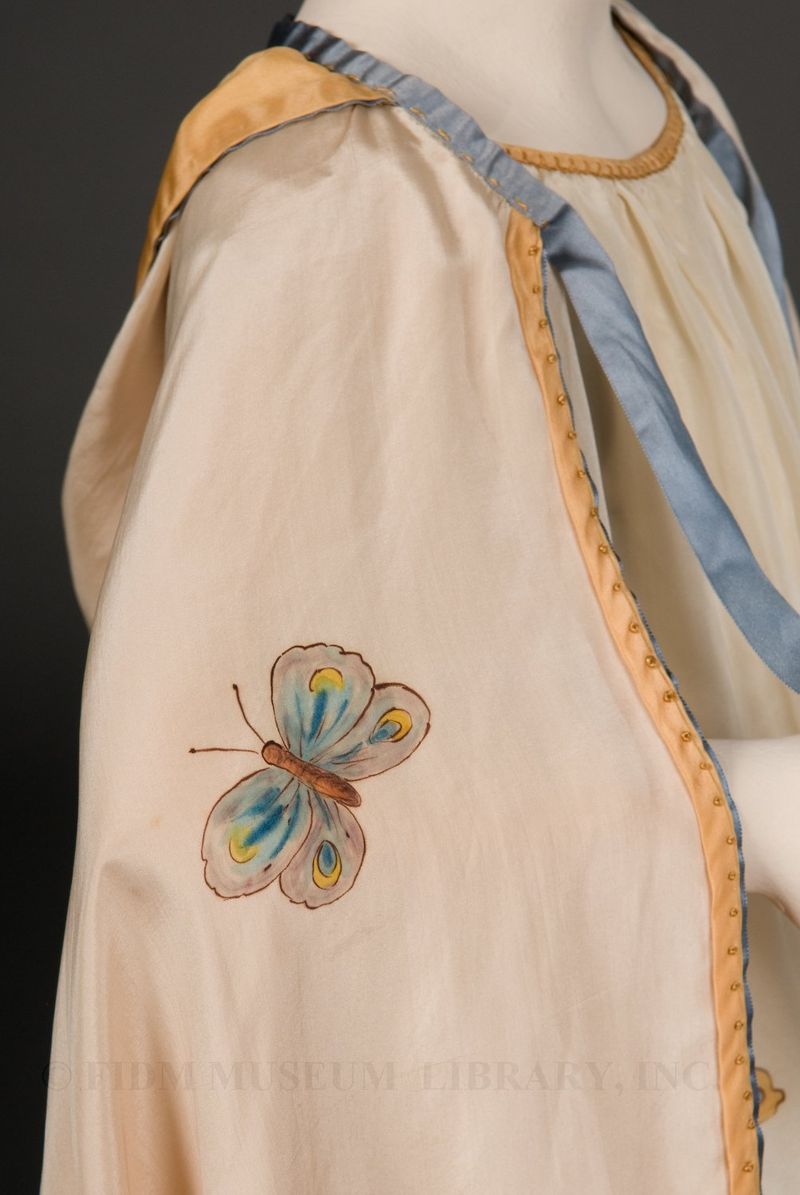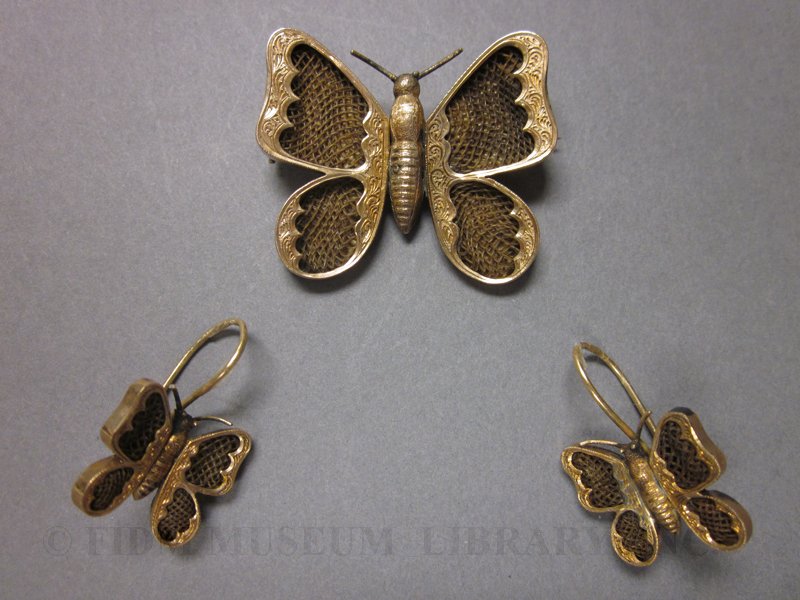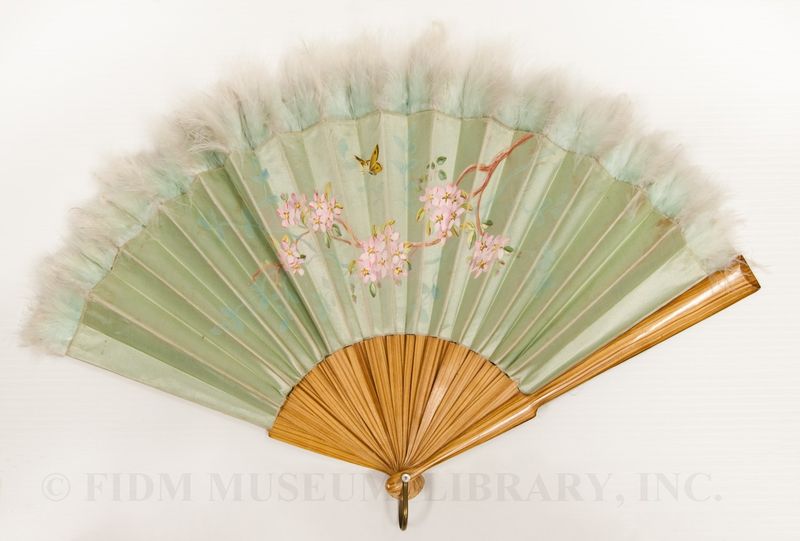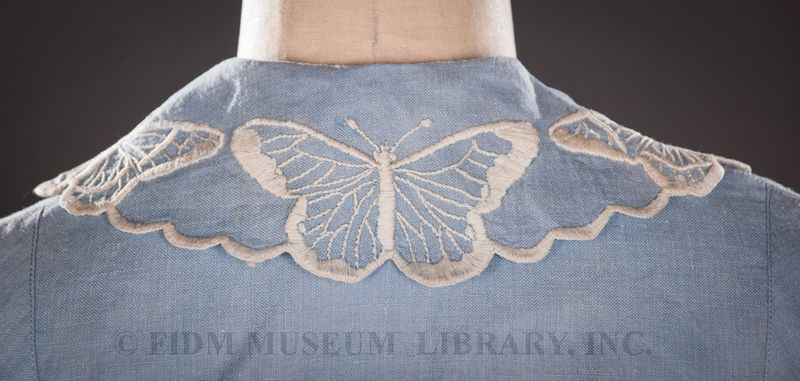Butterflies abound
Though we're not a natural history museum or a science center, we have lots of butterflies in our collection. No taxidermy specimens here, FIDM Museum butterflies are woven, printed, painted, and embroidered. Our curatorial team has no specific intent to collect garments and accessories decorated with butterflies, but the popularity of the motif makes it easy to acquire compelling pieces featuring this colorful, winged insect. According to our Curator Kevin Jones, "I would never accept an object into the collection just because it has a certain motif. It would have to be fab for a number of other reasons."
Butterflies can be found on every continent, with the exception of Antarctica. Diverse cultures have developed symbolic interpretations of the butterfly, many of which focus on its dramatic life-cycle. Hatching from the egg as a larva or caterpillar, the insect grows and eats until it reaches the chrysalis stage. During the chrysalis, a shell forms around the caterpillar, protecting the insect as it undergoes a metamorphosis into a beautifully colored butterfly. In ancient Greece, butterflies represented the soul, while Christian interpretations use the butterfly's life-cycle to symbolize resurrection. In parts of Asia, pairs of butterflies represent marital harmony and happiness. Butterflies have also been used to symbolize the transience of childhood, and are often used to decorate garments worn by little girls.
 Child's "Dainty Blossom" Ensemble
Child's "Dainty Blossom" Ensemble
Daisy Stanford
Hand-painted silk
c. 1925
Museum Purchase
2003.5.24A-C
Hand-painted scenes on our Dainty Blossom ensemble portray the story of Thumbelina. In this fairy-tale, written in the 1830s by Hans Christian Andersen, tiny Thumbelina is pulled by butterflies through a daffodil forest to marry her Flower-Fairy prince. See additional images of this charming girl's ensemble here. We also have a 19th century example of butterfly-motif children's wear. This c. 1865 girl's ensemble features embroidered blue butterflies perched on delicate branches.
 Hairwork jewelry suite
Hairwork jewelry suite
c. 1880
Gift of Andrea Tice in memory of Carmelita Johnson
2008.46.1A-C
Consisting of a brooch and earrings, this earring and brooch set is made from woven human hair placed in gold settings. A delicate reminder of the transience of human life, hairwork jewelry was very popular in the second half of the 19th century. In addition to memorializing departed family or friends, hairwork jewelry often incorporated visual symbols. Shaped like short-lived butterflies, this set probably references the Christian interpretation of butterflies as a symbol of resurrection. The FIDM Museum is fortunate to own a large collection of 19th century hairwork jewelry; other examples can be found here.
 Folding fan
Folding fan
c. 1900-1905
Gift of the Manlove Family
2006.870.39
Like the Dainty Blossom ensemble pictured above, this fan is also crafted from hand-painted silk. Featuring a fluttering butterfly hovering over a branch of cherry blossoms and trimmed with fluffy ostrich feathers, this fan evokes thoughts of Asia. We haven't yet determined whether it was manufactured in Asia or elsewhere, but either way, this fan was probably created for a Western audience interested in Asian decorative motifs. Other examples of folding fans from our collection can be seen here.
Our last butterfly image comes from a c. 1912 linen jacket. A scalloped collar (seen from the back) is edged with embroidered butterflies. The turned-back cuffs are embroidered with the same motif.
